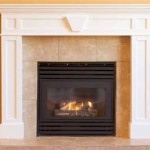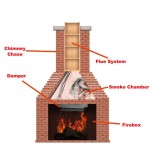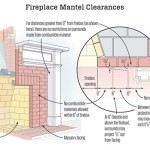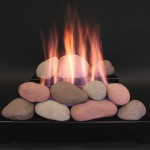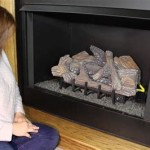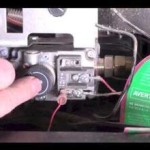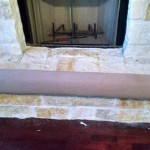DIY Bioethanol Fireplace: A Comprehensive Guide
Bioethanol fireplaces have gained considerable popularity as a modern and environmentally conscious alternative to traditional wood-burning fireplaces. They offer the ambiance of a real flame without the need for a chimney or gas line. For those seeking a cost-effective and personalized heating solution, building a DIY bioethanol fireplace presents an attractive option. This article provides a comprehensive guide to constructing a safe and aesthetically pleasing bioethanol fireplace.
Before embarking on this project, it is imperative to understand the fundamentals of bioethanol fireplaces. A bioethanol fireplace operates by burning liquid bioethanol fuel in a burner. The fuel is typically derived from fermented plant matter, making it a renewable energy source. The combustion process produces heat, water vapor, and a small amount of carbon dioxide, making it a cleaner-burning alternative to fossil fuels. The absence of smoke, soot, and ash simplifies maintenance and eliminates the need for a chimney system.
Safety Considerations: The Cornerstone of DIY Bioethanol Fireplace Construction
Safety must be the paramount concern when constructing a bioethanol fireplace. Bioethanol is a flammable liquid, and mishandling it can pose significant risks. A stable and non-flammable enclosure is essential for containing the burner and preventing accidental spills or leaks. Proper ventilation is also crucial to mitigate the buildup of carbon dioxide and ensure adequate oxygen supply. The following aspects merit meticulous attention:
Enclosure Material: The enclosure should be constructed from materials with high heat resistance and non-combustibility. Suitable choices include concrete, stone, stainless steel, and tempered glass. Wood, plastic, and other flammable materials should be strictly avoided. The enclosure must be structurally sound and capable of withstanding the heat generated by the burner without warping, cracking, or becoming unstable. The dimensions of the enclosure should be carefully considered to accommodate the burner and provide adequate space for the flame, preventing it from contacting the enclosure walls.
Burner Selection: The burner is the heart of the bioethanol fireplace, and its quality directly impacts safety and performance. Choose a burner that is specifically designed for bioethanol fuel and meets relevant safety standards. Look for features such as a flame extinguisher, adjustable flame control, and a spill-proof design. The burner should be appropriately sized for the enclosure to prevent overheating or inefficient fuel consumption. Ensure that the burner is securely mounted within the enclosure to prevent accidental displacement during operation.
Ventilation: While bioethanol fireplaces produce minimal emissions compared to traditional fireplaces, proper ventilation is still essential. The room in which the fireplace is used should have adequate airflow to prevent the buildup of carbon dioxide. A carbon monoxide detector is a valuable addition to any room with a bioethanol fireplace, providing an early warning of potentially dangerous carbon monoxide levels. Avoid using bioethanol fireplaces in small, enclosed spaces with limited ventilation.
Fuel Handling: Bioethanol fuel should be stored in a cool, dry place away from direct sunlight and heat sources. Always use a funnel when pouring fuel into the burner to prevent spills. Never refill the burner while the flame is burning or the burner is still hot. In the event of a spill, immediately clean it up with a damp cloth. Never store bioethanol fuel near flammable materials or open flames.
Materials and Tools Required for DIY Bioethanol Fireplace Construction
The materials and tools required for building a DIY bioethanol fireplace will vary depending on the chosen design and materials. However, the following list provides a general overview of the essential items:
Enclosure Materials: As previously mentioned, appropriate materials include concrete blocks, stone slabs, stainless steel sheets, and tempered glass panels. The quantity of materials will depend on the size and shape of the desired enclosure. Mortar or adhesive suitable for the chosen materials will also be needed.
Bioethanol Burner: Select a burner that meets safety standards and has the desired features, such as flame control and a spill-proof design. The burner's dimensions will influence the design of the enclosure.
Decorative Elements (Optional): Heat-resistant decorative elements, such as ceramic logs, river rocks, or tempered glass pebbles, can enhance the aesthetic appeal of the fireplace. Ensure that these elements are specifically designed for use in fireplaces and do not release harmful fumes when heated.
Tools: A variety of tools will be required for cutting, shaping, and assembling the enclosure materials. These may include a saw, drill, level, measuring tape, trowel, hammer, and safety glasses. The specific tools needed will depend on the chosen materials and construction method.
Fasteners: Screws, bolts, and other fasteners will be needed to secure the enclosure components together. Choose fasteners that are appropriate for the chosen materials and can withstand the heat generated by the burner.
Bioethanol Fuel: Procure a sufficient quantity of bioethanol fuel for testing and regular use. Ensure that the fuel is specifically designed for bioethanol fireplaces and meets relevant safety standards.
Step-by-Step Guide to Building a DIY Bioethanol Fireplace
The following steps provide a general guide to building a DIY bioethanol fireplace. However, the specific steps may vary depending on the chosen design and materials. It is always recommended to consult with experienced builders or online resources for detailed instructions and guidance.
Design and Planning: Begin by creating a detailed design for the fireplace, including dimensions, materials, and construction methods. Consider the location of the fireplace and ensure that it is placed in a well-ventilated area away from flammable materials. Determine the size and shape of the enclosure based on the dimensions of the chosen burner and the desired aesthetic appeal. Create a detailed plan that includes a list of materials, tools, and construction steps.
Material Preparation: Cut and shape the enclosure materials according to the design specifications. Ensure that all cuts are precise and that the edges are smooth and free of sharp corners. Drill any necessary holes for fasteners or ventilation. Thoroughly clean the materials to remove any dust or debris.
Enclosure Assembly: Assemble the enclosure components according to the design plan. Use appropriate fasteners and adhesives to secure the pieces together. Ensure that the enclosure is level and structurally sound. Allow the adhesive to cure completely before proceeding to the next step.
Burner Installation: Mount the bioethanol burner securely within the enclosure. Follow the manufacturer's instructions for installation and ensure that the burner is level and properly positioned. Connect any necessary fuel lines or accessories.
Decorative Element Placement (Optional): Arrange the decorative elements, such as ceramic logs or river rocks, around the burner to enhance the aesthetic appeal of the fireplace. Ensure that the decorative elements do not obstruct the flame or interfere with the burner's operation.
Testing and Adjustment: Carefully fill the burner with bioethanol fuel according to the manufacturer's instructions. Light the burner and observe the flame. Adjust the flame control to achieve the desired flame height and intensity. Monitor the fireplace for any signs of overheating or instability. Ensure that the flame is contained within the enclosure and does not contact the walls. Allow the fireplace to burn for a period of time to ensure that it is operating safely and efficiently.
Final Inspection: Thoroughly inspect the fireplace for any potential safety hazards before using it regularly. Ensure that all components are securely fastened and that the enclosure is structurally sound. Check the ventilation and ensure that the room has adequate airflow. Place a carbon monoxide detector in the room for added safety.
Documentation: Maintain a record of the materials, tools, and construction methods used in the project. This documentation will be helpful for future maintenance and repairs.
Building a DIY bioethanol fireplace can be a rewarding and cost-effective project. However, safety must be the top priority. By carefully following the guidelines outlined in this article and consulting with experienced builders, individuals can construct a safe, aesthetically pleasing, and environmentally conscious heating solution for their homes.

Diy Project Build Your Own Outdoor Bioethanol Fireplace

12 Best Ethanol Fireplace Ideas

Diy Tabletop Fire Pit Mighty Mrs Super Easy Recipes

3 Diy Bio Ethanol Fireplaces That You Can Make Yourself Shelterness

Ethanol Fireplace Build Diy

3 Diy Bio Ethanol Fireplaces That You Can Make Yourself Shelterness

Diy Bio Ethanol Fireplace For Quick And Easy Assembly

Spark Of Inspiration Ethanol Fireplace Bioethanol Diy

Diy Bioethanol Fireplace Package How To Make Your Own Bio Group

Conversion Packs Diy
Related Posts

